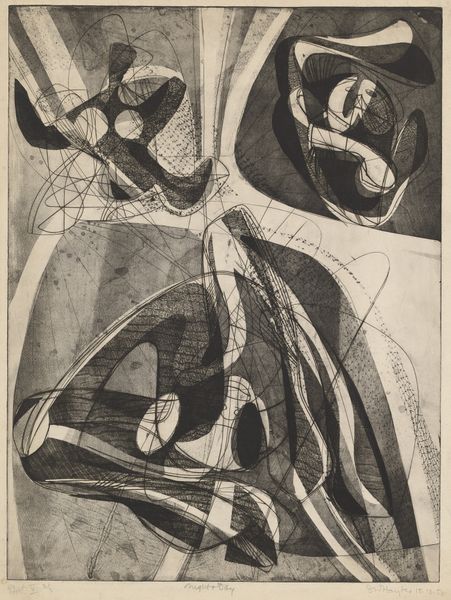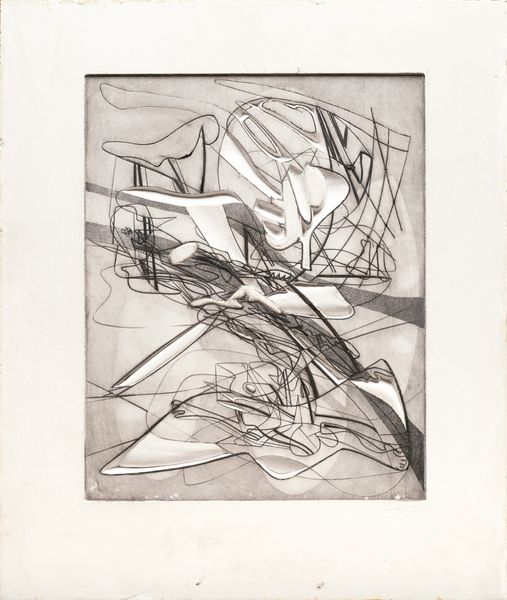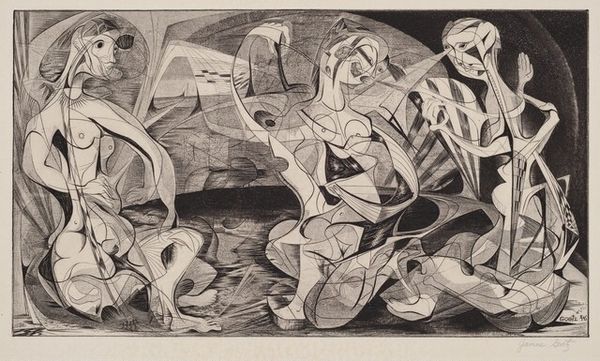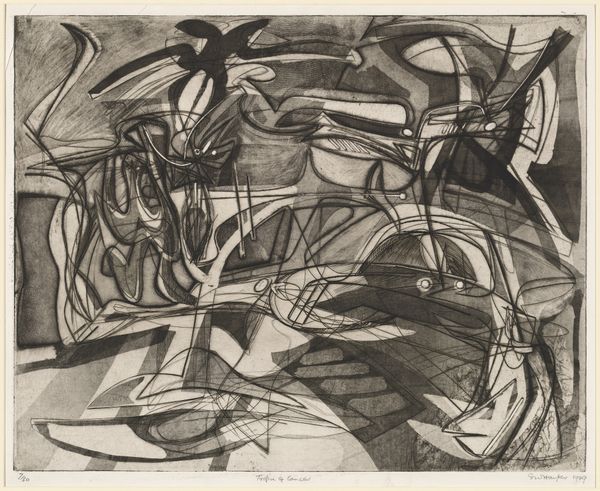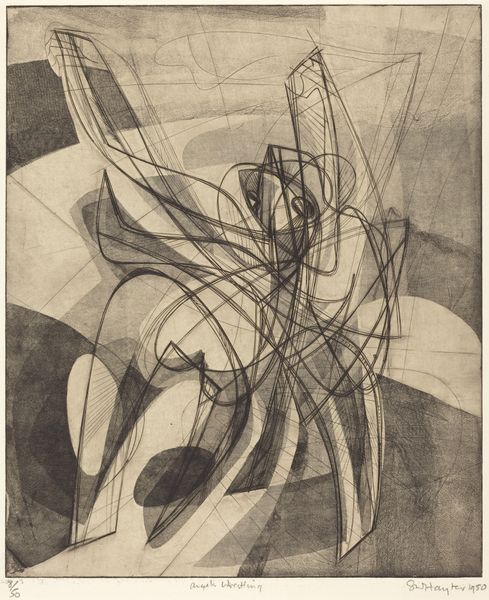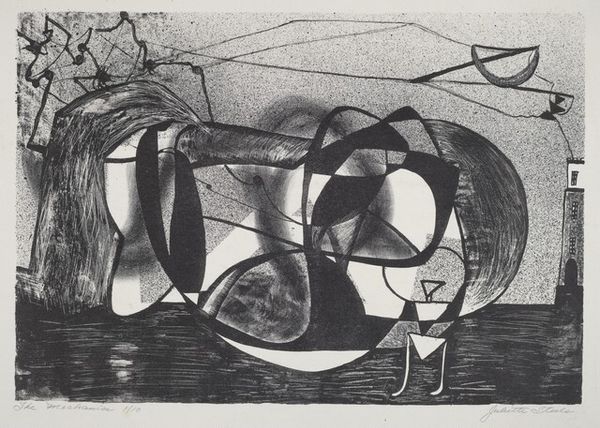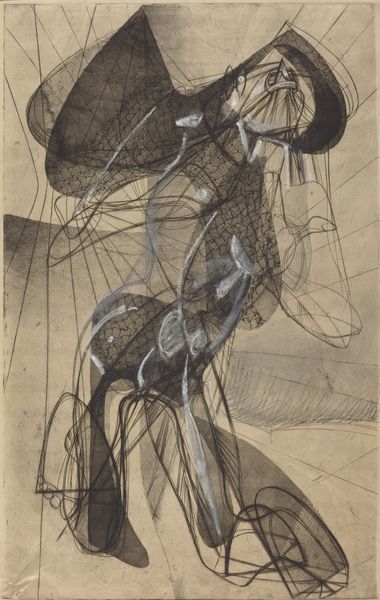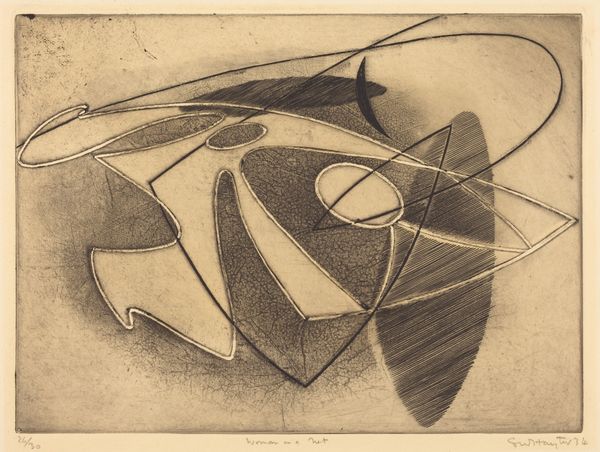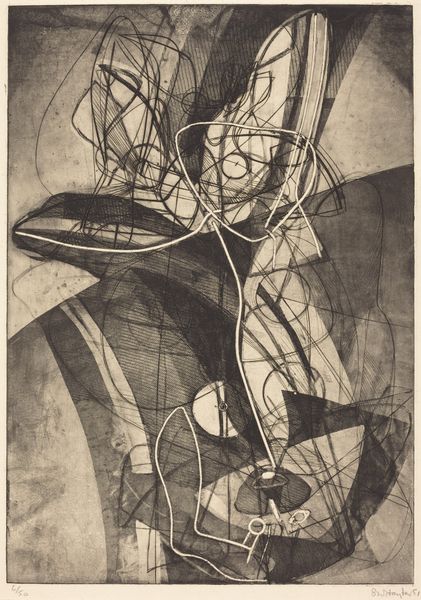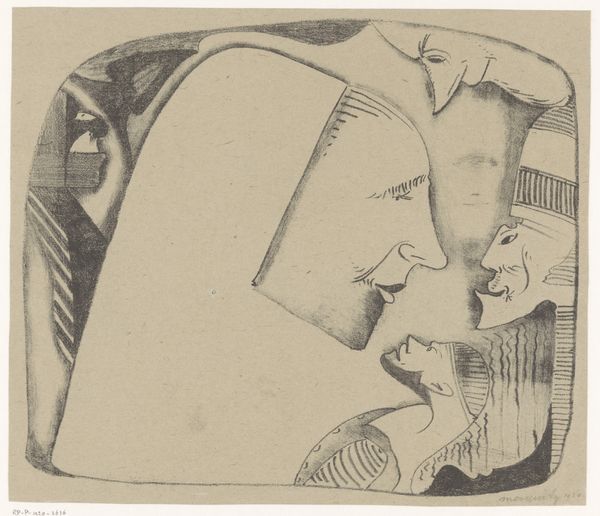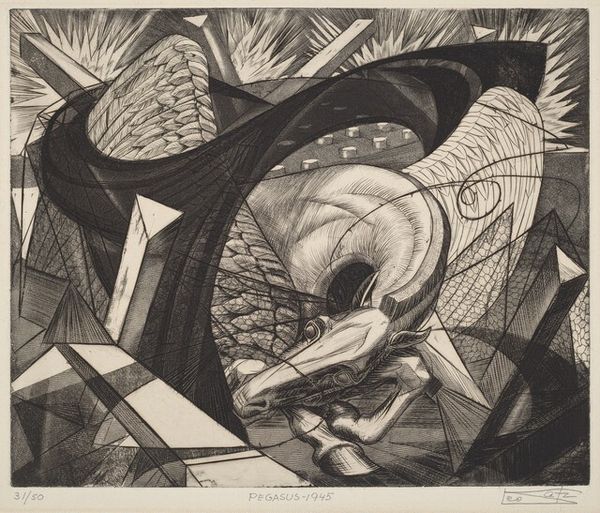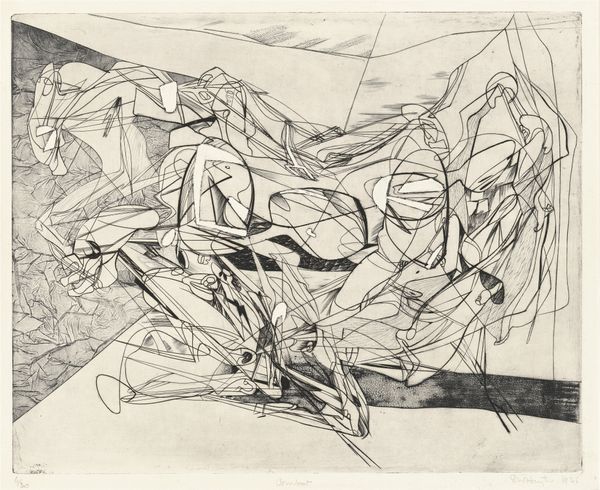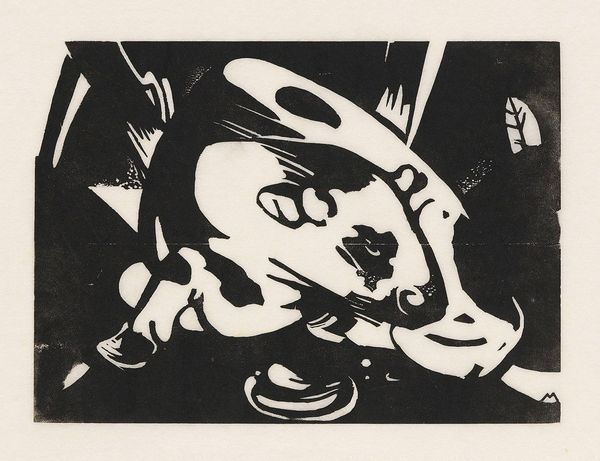
mixed-media, print, etching
#
abstract-expressionism
#
mixed-media
# print
#
etching
#
figuration
#
geometric
#
abstraction
#
line
#
surrealism
Dimensions: plate: 39.7 x 50.4 cm (15 5/8 x 19 13/16 in.) sheet: 46.2 x 56.4 cm (18 3/16 x 22 3/16 in.)
Copyright: National Gallery of Art: CC0 1.0
Editor: So, here we have Stanley William Hayter's "Cronos," created in 1944 using mixed media, primarily etching. It's this chaotic web of lines and shapes, a real jumble! I am really drawn to its abstraction. What do you see in this piece? Curator: This piece dives into the deep waters of mythology. Cronos, the Titan who devoured his children, becomes a potent symbol for time, destruction, and the anxieties of existence, especially relevant in 1944, during the height of global conflict. Do you see how Hayter uses geometric forms that seem to simultaneously construct and deconstruct the figure? Editor: I do notice the geometric lines but the human form, at least implied, throws me off... So is he playing with the push and pull of creation and destruction in human existence? Curator: Exactly. Look closely at how Hayter employs the line. It is sharp, energetic, almost violent. It speaks to the raw, untamed power of Cronos, not just as a mythological figure, but as a psychological archetype. Hayter presents Cronos as the embodiment of existential dread and the destructive force of time itself. Editor: That makes a lot of sense, considering the war... a visual metaphor for what people were feeling. It's like Hayter's channeling the collective fear into this one image. Curator: Precisely. The symbols embedded within are more than just illustrative; they become a mirror reflecting a cultural memory of destruction and regeneration. The piece makes you question whether to see these symbols as comforting or frightening. Editor: I definitely see it now. Before, I just saw chaotic lines but you helped bring it all together. Curator: And you highlighted the immediate visceral response, which is vital. Ultimately, art should incite thought.
Comments
No comments
Be the first to comment and join the conversation on the ultimate creative platform.
